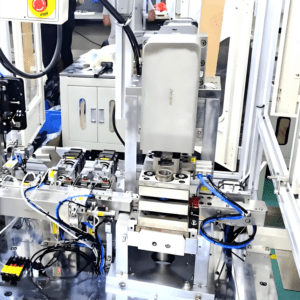
This article will systematically introduce the application methods, key technologies, strategy formulation approaches, typical use cases, challenges, and potential value of AI in enterprise networks, providing a detailed guide for enterprises aspiring to move towards intelligent networks.
In the context of the rapid development of digitalization and information technology, enterprise networks are facing new challenges: from massive data volumes to diversified network threats, from users’ high expectations for network experience to the operation and maintenance teams’ continuous pursuit of efficiency. Against this backdrop, artificial intelligence (AI) and machine learning (ML) have become key forces in enhancing the intelligence and automation levels of enterprise networks.
Artificial intelligence in networks is not just an extension of technological trends; it represents a profound transformation in network architecture and operation models. By introducing AI, enterprises can achieve proactive management, intelligent monitoring, automated operations, and predictive maintenance, thereby significantly improving network performance and security.
This article will systematically introduce the application methods, key technologies, strategy formulation approaches, typical use cases, challenges, and potential value of AI in enterprise networks, providing a detailed guide for enterprises that want to move towards intelligent networks.
What is AI in Networks?
Artificial intelligence (AI) in networks refers to the application of AI technologies (including machine learning, deep learning, natural language processing, etc.) in IT network environments to improve network performance, automated management, security, and scalability.
The main application goals of AI in networks include:
- Realizing real-time problem prediction and response;
- Automating operational processes;
- Reducing human errors;
- Enhancing security protection capabilities;
- Providing data-driven decision support.
The application of AI in enterprise networks relies on a large amount of network data input, including logs, traffic information, device status, etc. Through continuous learning and optimization, AI systems can continuously enhance their adaptability and processing capabilities.
The Role of Machine Learning in Network AI
Machine learning is one of the core technologies of AI, enabling systems to learn from data rather than relying on explicit program instructions. This learning ability plays the following important roles in enterprise networks:
- Accelerating troubleshooting: By analyzing historical and real-time data, AI can identify patterns, locate problems, and propose solutions.
- Generating intelligent insights: Discovering abnormal user behaviors, traffic fluctuation trends, and system bottlenecks to provide decision support for administrators.
- Defending against security threats: Machine learning-based Intrusion Detection Systems (IDS) can identify zero-day attacks and unknown threats.
- Optimizing application experience: Automatically learning user preferences and access patterns to optimize resource allocation and service quality.
What is a Network Automation?
“Network Automation” refers to the process of using software tools to automatically configure, manage, test, and maintain network devices. This process significantly reduces the need for human intervention, thereby improving efficiency, reducing error rates, and enhancing network reliability.
Network automation is often combined with the following technologies:
- Software-Defined Networking (SDN): Separates control and data, enabling centralized and flexible network control.
- Intent-Based Networking (IBN): Uses AI to understand “intent” and automatically convert it into configuration and policy execution.
- Network Functions Virtualization (NFV): Allows network services such as firewalls and load balancers to run virtually on standard servers.
Automated networks are the infrastructure pillar for realizing intelligent networks. AI injects “wisdom” into them, transforming the traditional passive response mode into an active, self-healing, and adaptive network operation and maintenance mode.
Eight Key Steps to Formulate an AI Network Strategy
The successful implementation of an AI network strategy not only depends on the improvement of the technology stack but also requires a clear vision, a clear execution path, and internal organizational collaboration. The following are eight key steps to formulate an effective AI strategy:
Set clear goals
Clarify the field where AI will play a role: Is it to optimize operations? Improve customer experience? Enhance security?
Goals need to be specific, measurable, and aligned with the company’s overall strategy.
Evaluate data preparation
Ensure the completeness, accuracy, and structure of data;
Solve data silos and data redundancy issues;
Introduce data governance processes to improve data utilization efficiency.
Analyze how AI adds value to the business
Analyze AI value for different scenarios, such as customer service, network maintenance, and security response;
Evaluate dimensions such as cost savings, performance improvement, and risk reduction.
Select appropriate AI technologies
Choose cloud AI platforms, on-premises AI frameworks, or hybrid models based on business needs;
Consider scalability, ease of integration, and maintenance costs;
Focus on the supplier’s support capabilities and community activity.
Establish Key Performance Indicators (KPIs)
Such as network operation efficiency, problem detection accuracy, customer satisfaction, etc.;
Use dashboards to display KPIs in real-time to facilitate tracking of project progress.
Pilot projects first
Start with small-scale projects to quickly verify the effectiveness of the AI strategy;
Continuously iterate and optimize to avoid systemic errors before large-scale deployment.
Monitor and optimize AI results
Implement AI lifecycle management;
Regularly review model performance to ensure it adapts to the latest network environment;
Automatic retraining mechanisms help models keep up with the times.
Continuous learning and skill investment
Invest in AI training and industry certifications;
Encourage teams to participate in AI communities and seminars;
Keep up with AI technology developments, such as generative AI and edge AI.
AI Application Scenarios in Enterprise Networks
The following are typical application scenarios of AI in enterprise networks. These use cases have been widely implemented in leading enterprises and demonstrated strong value.
Log analysis
Artificial intelligence plays an important role in log analysis. It effectively handles various tasks such as anomaly detection, incident response optimization, and predictive maintenance. It classifies logs, generates data summaries, and analyzes user behaviors to ensure security.
In addition, AI maintains compliance, assists in capacity planning, and optimizes performance by filtering large amounts of log data. This integration enables organizations to proactively manage network health, enhance security, and make accurate data-driven decisions.
Advanced data analysis
AI in advanced analytics helps enterprise networks by extracting insights from network data. It detects trends, predicts usage, and maximizes opportunities. It also predicts maintenance issues based on historical data and supports data-driven decisions through visualization and reporting. AI transforms network data into valuable information, improving efficiency, costs, and performance.
Performance monitoring
In performance monitoring, AI improves network performance and user experience by analyzing network data to detect problems. It also predicts and prevents performance degradation through historical data. In addition, it reports and visualizes performance indicators, enabling network administrators to make data-based decisions.
Security threat detection and alerting
AI in security alert management detects and responds to threats by analyzing network data. It identifies suspicious patterns and triggers alerts. It also correlates security events to show potential threats. AI strengthens network security, reduces response time, and protects network infrastructure.
Traffic management
For traffic management, artificial intelligence makes dynamic routing decisions based on real-time data, optimizes resource allocation, and reduces congestion. It can also identify traffic patterns, prioritize critical applications, and adapt to changing conditions. In addition, it balances loads and ensures Quality of Service (QoS), providing a smooth and responsive user experience.
Intelligent Programmable Automation Controller (IPAC)
AI-driven Intelligent Programmable Automation Controllers (IPACs) automate and control network operations. By leveraging AI, they enhance network configuration, allocation, and management. IPACs also support dynamic adjustments based on network conditions and user needs to achieve optimal performance and resource allocation.
In addition, IPACs can quickly respond to threats and implement security policies. They enable organizations to achieve greater network flexibility, reliability, and security, ultimately improving overall network efficiency.
Automatic scanning and patch management
AI-based autonomous scanning and patching reduce vulnerability windows and ensure the timely implementation of critical security updates, enhancing the security posture. These systems continuously scan network assets, discover vulnerabilities, and automatically apply patches or remediation measures without human intervention.
Autonomous scanning and patching enhance resistance to evolving threats by providing active defense against potential exploitation and reduce the manual workload of IT teams. They make network security more robust and adaptable in the face of emerging threats.
Automated configuration and provisioning
AI-driven automated provisioning improves enterprise networks by automating the configuration, allocation, and scaling of network resources and services. It minimizes human errors and improves the agility of network asset provisioning. It also optimizes resource utilization and saves costs. Automated provisioning enables organizations to efficiently meet business needs and improve productivity.
Advantages of AI-Enabled Network Operations
Using artificial intelligence brings many advantages to enterprises, including improved decision-making, better customer experience, increased efficiency, predictive analytics, cost reduction, and innovation.
Improved decision-making
Artificial intelligence can provide valuable insights from data analysis, enabling more informed and data-based decisions.
Better customer experience
AI-driven solutions such as chatbots, personalized marketing, recommendation systems, and virtual assistants can provide 24/7 personalized support and enhance the customer experience.
Increased efficiency
Artificial intelligence can automate daily tasks, reduce human errors, and free up employees’ time to focus on more complex tasks. This improves efficiency and productivity.
Predictive analytics
AI’s ability to predict trends and patterns enables enterprises to anticipate market changes and adjust accordingly.
Cost control
Through process automation, artificial intelligence can help reduce labor and operational costs, improve profitability, and bring significant cost savings.
Technological innovation
Artificial intelligence drives innovation by assisting in research and development, discovering new products and services, and improving existing ones. It opens up new avenues for innovation that were previously impossible.
Challenges Faced by AI in Network Operations
Despite significant progress, some persistent challenges remain in AI for network operations, such as data quality, interoperability, security, interpretability, and scalability.
Data quality and consistency
AI models are highly dependent on network data for learning and making accurate predictions. However, acquiring, labeling, and processing this data is not easy. It can be an expensive, labor-intensive, and complex process. In addition, noise, missing information, or irrelevant data in network data can negatively impact the performance of AI models.
Interoperability
Problems in adopting artificial intelligence (AI) in network security operations stem from the need for AI systems to seamlessly integrate with various network devices, different communication protocols, and proprietary technologies from multiple vendors. Incompatibilities can lead to integration issues, ranging from minor inconveniences to major disruptions in network operations.
Security and privacy
In network security operations, artificial intelligence faces security and privacy challenges due to potential improper handling of personal data, risks of cyberattacks, ethical issues of biased decisions, and lack of transparency. Many AI systems need access to sensitive network data, and any leakage of this data can lead to serious security vulnerabilities.
In terms of privacy, AI systems must strike a balance between obtaining necessary data to improve operational effectiveness and protecting personally identifiable or sensitive information. Therefore, integrating AI into network operations requires robust security measures and privacy-focused technologies.
Interpretability and trust
Interpretability and trust are key challenges for AI in network operations. Although AI systems can simplify network traffic and detect anomalies, they can be complex and difficult to understand. As a result, troubleshooting and problem-solving become difficult, reducing confidence in AI-driven solutions.
In addition, AI models need to be unbiased and secure. To address these issues, some efforts aim to create AI models that can explain themselves, audit their processes, and follow clear regulations.
Scalability
Some artificial intelligence in network operations still struggles with scalability. Networks are becoming larger and more complex, and AI systems need to process and analyze more data and devices. AI algorithms and models need to process and analyze this data quickly and efficiently. Otherwise, scalability issues can lead to delays, slow responses, and system congestion, causing bottlenecks or downtime on critical networks.
Conclusion: Moving Towards the Future of Intelligent Networks
Enterprise networks are rapidly evolving from traditional structures to intelligent, highly automated new network architectures. The introduction of artificial intelligence not only improves network management efficiency and security but also opens up new horizons for business decision-making, user experience, and digital transformation.
However, the implementation of AI is not achieved overnight. It requires a solid data foundation, mature technology selection, strong organizational impetus, and clear strategic planning. In the face of challenges, only continuous innovation, open collaboration, and timely adjustments can allow AI to truly release its full potential in the network field.
By deploying intelligent networks, enterprises will gain advantages in agile response, refined management, and sustainable development in global competition, entering a new era of network operations.
Comparison between the work of metal sorters and artificial intelligence What benefits does the automated sorting system bring to automation?




















